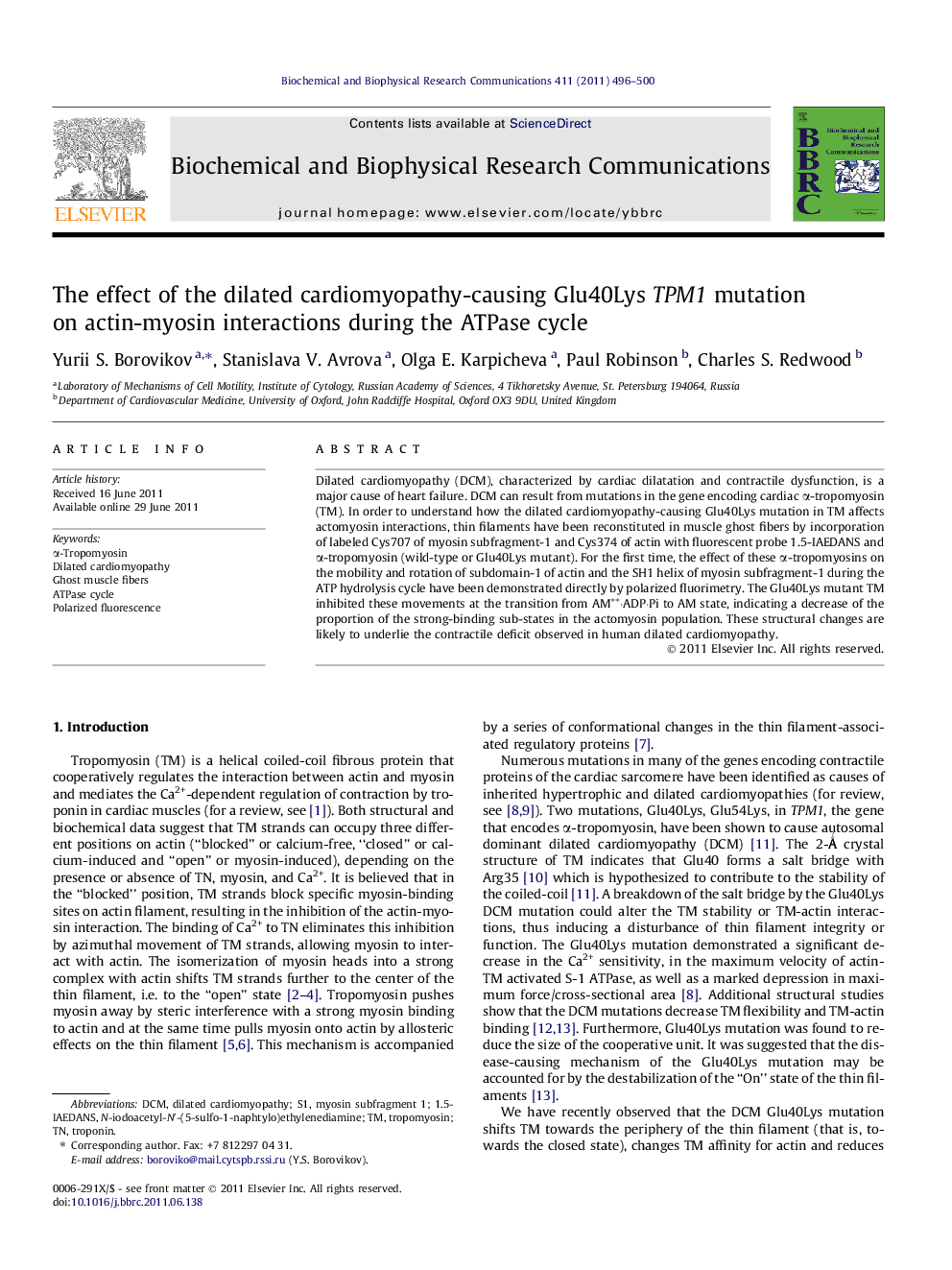| Article ID | Journal | Published Year | Pages | File Type |
|---|---|---|---|---|
| 1930401 | Biochemical and Biophysical Research Communications | 2011 | 5 Pages |
Dilated cardiomyopathy (DCM), characterized by cardiac dilatation and contractile dysfunction, is a major cause of heart failure. DCM can result from mutations in the gene encoding cardiac α-tropomyosin (TM). In order to understand how the dilated cardiomyopathy-causing Glu40Lys mutation in TM affects actomyosin interactions, thin filaments have been reconstituted in muscle ghost fibers by incorporation of labeled Cys707 of myosin subfragment-1 and Cys374 of actin with fluorescent probe 1.5-IAEDANS and α-tropomyosin (wild-type or Glu40Lys mutant). For the first time, the effect of these α-tropomyosins on the mobility and rotation of subdomain-1 of actin and the SH1 helix of myosin subfragment-1 during the ATP hydrolysis cycle have been demonstrated directly by polarized fluorimetry. The Glu40Lys mutant TM inhibited these movements at the transition from AM∗∗·ADP·Pi to AM state, indicating a decrease of the proportion of the strong-binding sub-states in the actomyosin population. These structural changes are likely to underlie the contractile deficit observed in human dilated cardiomyopathy.
► We used polarized fluorimetry to assess the conformation changes in S1 and actin during the ATPase cycle. ► Myosin SH1 helix and actin subdomain-1 movements was measured. ► DCM Glu40Lys α-tropomyosin mutant was compared with the wild type α-tropomyosin. ► During the ATPase cycle, this mutant decreases the proportion of the strong-binding sub-states. ► A decrease in the strong-binding states is likely to cause the contractile deficit at DCM.
